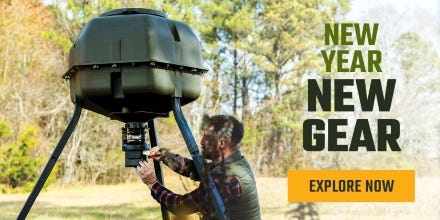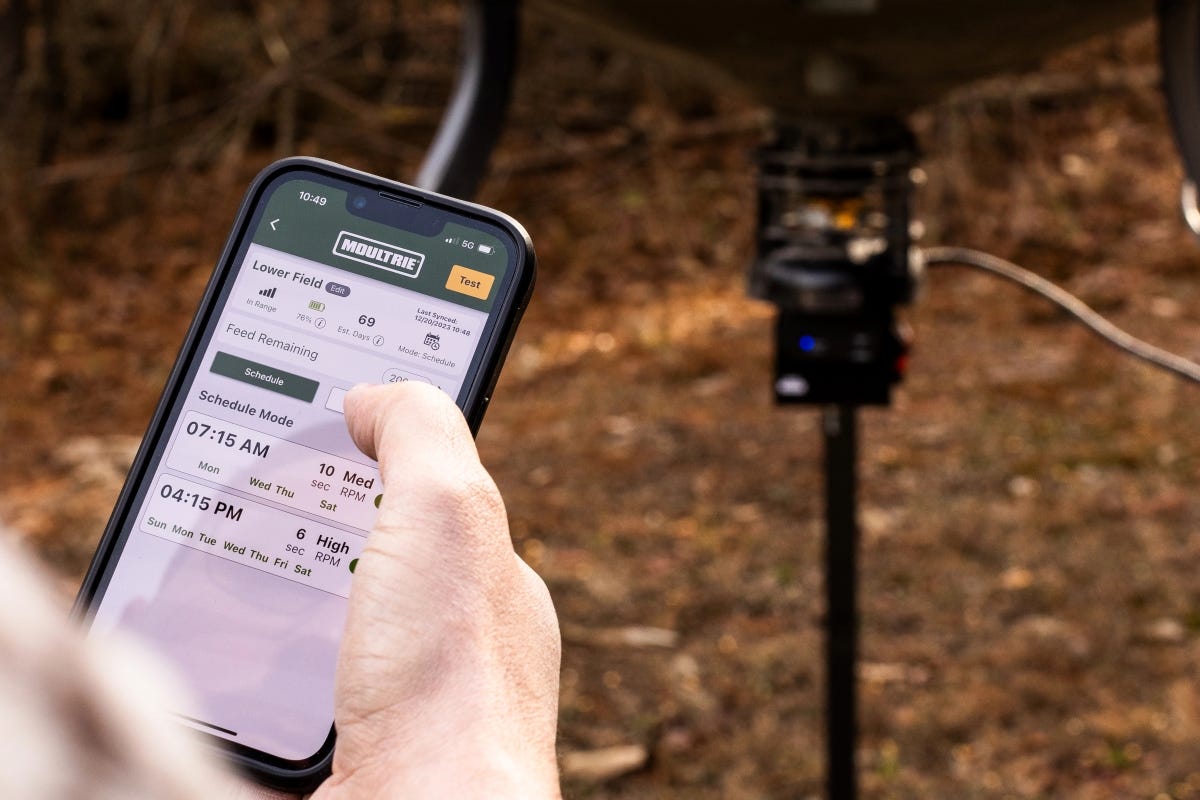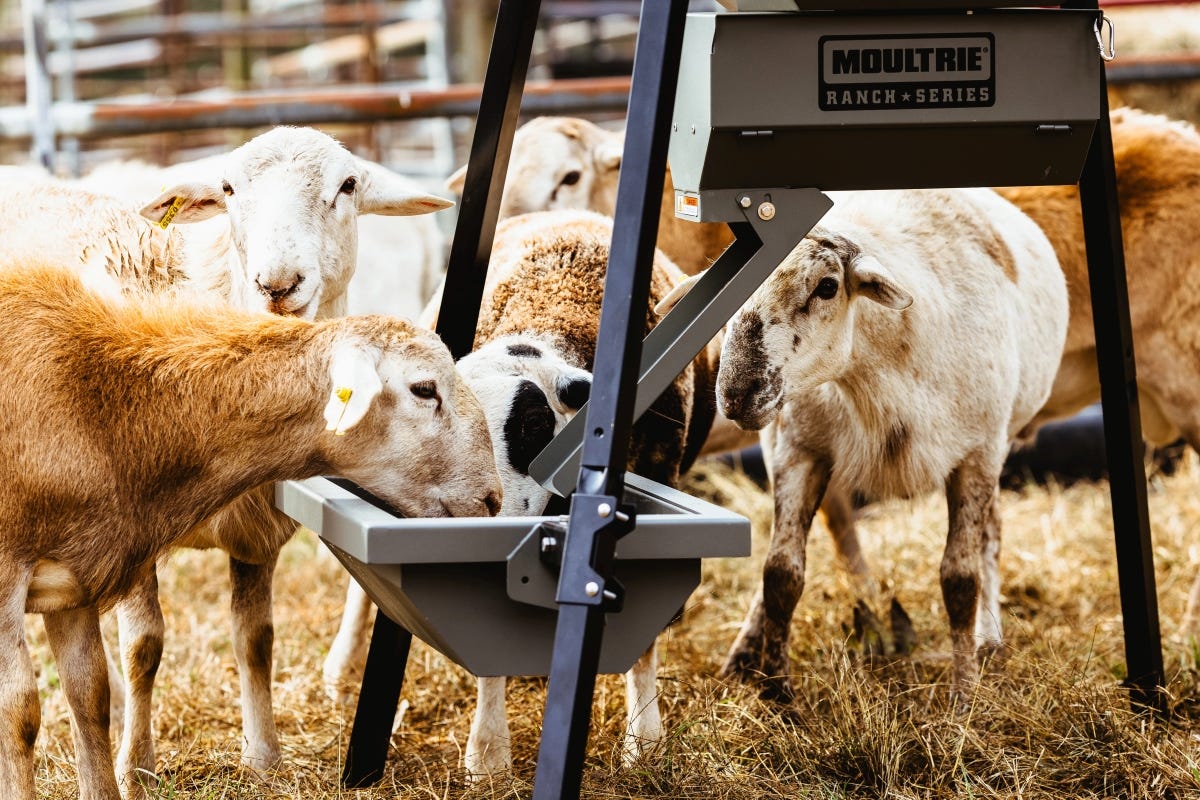- Oct 29, 2020
Do Trail Cameras Spook Deer
As a hunter, we don't have to tell you how important trail cameras can be to find, track and tag an elusive buck during hunting season. Trail cameras provide valuable intel about the types of deer and wildlife that frequent your favorite hunting spot, including their habits and characteristics. Trail cameras also let you know if your having pocher or trespasser problems.
Despite how beneficial trail cameras are, some can create complications. Bright flashes, loud mechanical shutters and lingering scents all threaten to scare deer away and reduce your chances of gaining significant intel. Fortunately, many cameras, including Moultrie Mobile cellular trail cams, have innovative technology to eliminate these complications and capture top-quality photos.
Keep reading to learn more about how deer see, as well as tips for choosing and placing your trail camera effectively.
How Do Deer See?
Deer have narrow pupils set apart on either side of their head. While humans can center our eyesight on an object directly in front of us, we struggle to make sense of the blurred edges of our vision. For deer, it's almost the opposite. The spatial distance between their eyes leaves them with poor depth perception, but the ability to see more of their surroundings. So, while wearing camouflage certainly doesn't hurt your hunting efforts, the most critical hunting practice to master is remaining motionless while waiting for your shot.
Do Deer Have Good Eyesight?
One of the most significant advantages deer have in terms of eyesight is the location of their pupils on the side of their head. This position gives them a wide-angle view of the world around them, enabling them to detect movement quickly. Despite their heightened sense of seeing motion, deer struggle to focus on fine details.
Are deer colorblind? In the sense that we think of color blindness — as the inability to see and interpret specific colors — yes, they are. But deer do not see the world in monotone grayscale. Studies show that they are red-green colorblind and that shades of red, orange and green all look the same, while other colors, like blue, stick out.
Deer are also highly sensitive to UV lights due to the lack of UV filter in their eyes. This means you should always avoid using laundry detergents with brightening agents, as these will make you more detectable in the woods.
Deer Night Vision
If you've ever caught a glimpse of a deer on your trail cam after dark, you've likely noticed their glowing eyes at night. This is due to the tapetum lucidum layer in the back of their eyes, which reflects light, causing the eerie glow. This reflective layer means that deer utilize light differently than we do. Deer also have more nighttime cells in their eyes than us — and fewer daytime and color processing cells — meaning they can see better than us at night but worse during the day. They do not require light to navigate in the dark.
Deer vision is at its peak during sunset and sunrise. Low-light conditions are the perfect balance for deer because their pupils open wide enough to gather light, while the rods and reflective layers in their eyes interpret these images clearly.


Trail Camera Elements That May Spook Deer
With such complex eyesight, how do you use a trail camera without scaring the deer away? The key is to know what to avoid and to use that information to invest in the right trail camera.
1. Flash
Flash is a crucial element of capturing quality trail camera photos, but many hunters worry that the light generated will frighten deer away. Deer can see infrared light, so it's vital that you invest in a trail camera that has minimally disruptive flash. For example, some Moultrie Feeders trail cameras are equipped with Invisible flash and an Illumni-Night sensor. Features like these enable your trail camera to take clear pictures with no light disruption, even at night.
Another way to combat flash-related concerns is to choose the location for your trail camera carefully. If you install your camera on a tree above a deer's eye level, they are less likely to notice any disturbances. White-tailed deer stand at just over 3 1/2 feet at shoulder height, so keep this in mind when selecting the right spot for your trail camera.
2. Scent
One thing that can spook deer and other wildlife is the scent you leave behind after checking your trail camera. Deer have an excellent sense of smell. They can usually detect when you're approaching, what you've touched and the areas you've recently been near the camera.
Examples of scents a deer might pick up from you include:
- Laundry detergent
- Perfume or cologne
- Deodorant
- Skin and hair care products
- Food, oils or smoke in your clothes
- Other animals, like pets
- Body wash and shampoo
Using a remote cellular trail camera is the best way to avoid this risk because it eliminates the need to visit your trail camera and retrieve an SD card. Instead, a cellular trail camera saves the thumbnails to cloud storage, and images are available to view on your cellphone via app or email 24/7.
3. Sound
Deer are accustomed to certain sounds that are natural to their environment, like the sound of other animals, trickling streams and rivers and the whistle of the wind in the trees. Because they hear these sounds every day, they are not alert to them, even in some of the noisiest outdoor settings. However, they will quickly note and react to any unnatural sounds, including human footsteps, coughs or sneezes and voices.
Some trail cameras create unnatural sounds that scare deer away from the area. Many single-lens cameras have a slight shutter sound when they take a photo. Other trail cameras make a noise when flash dispenses or when mechanical sensors activate. Avoid noise pollution by investing in a high-quality camera, free of any unnecessary features, sensors or mechanics. Dual-lens cameras are a great option because they produce better images and usually have integrated nighttime filters, so no lens movement is needed.
Trail cameras are perfect for watching deer across your property, but they only work if the deer come around. Foreign scents easily spook deer. If you don't take the necessary precautions before heading out, they can detect your scent for days after you leave. So what's the solution?
The Necessity Of Checking Trail Cameras
If you have cameras that use SD cards to record your shots, you'll have to get out there and pull them to see what you've got. These cameras store all the images they gather on a removable memory drive. Retrieval by hand is the only way to get the drive and see the images you captured.
Each time you check your trail cameras requires a trip to the site, which takes time from your day and money in gas. You also risk leaving your scent behind, sabotaging all the work you've put into installing your cameras and attracting deer.
How To Check Trail Cameras Without Spooking Deer
Before you go check to see the latest game your cameras caught, take steps to avoid detection or leaving your scent behind. Here are several proven steps that you can take to check trail cameras without spooking deer:
- Strategize your placement. Putting your game cameras too close to a bedding area can lead to challenges checking photos without upsetting the herd. Try placing yours by a watering hole or food source that you can check when it's safe.
- Plan your trip ahead. If you've gathered enough photos and information to understand your herd's habits, you can plan your trip around their behavior. Check your game cameras when you know they've passed through and are bedded down for the day.
- Wear the right boots. Deer have an excellent sense of smell. Keep yourself concealed by clean rubber boots. Latex gloves will help you prevent leaving scent on the camera.
- Mask your scent. Staying upwind keeps you undetected, but it can prove challenging. Camera placement or a sudden change in wind direction can send your scent straight to the herd. Spray yourself and clothing down with a scent eliminator.
- Adjust for the time of year. There are times and seasons when you can scale back how often you check your trail cameras. During the summer, once per month is appropriate. As the hunting season picks up, you'll want to increase your frequency.
- Go cellular. Upgrading to cellular trail cameras eliminates the need to physically retrieve your photos, storing them in the cloud instead. These cameras connect to the cellular network, and you can access all your images without leaving your favorite chair.
Up Your Hunting Game With a Moultrie Trail Cam
If you want a high-quality trail camera with minimally disruptive flash, no excessive lens sounds and unmatched reliability, Moultrie Feeders has what you need. Our cellular trail cameras offer superior quality and eliminate the need to visit your cameras in person to retrieve an SD card.
Connect your cellular camera with a Moultrie Mobile plan, and you gain access to hundreds or thousands of images each month, right from your phone. This means your camera, feeding spot or favorite hunting destination can remain untouched throughout the year. Our innovative camera designs also feature advanced image recognition, automatically tagging thumbnails as either deer, buck, doe, turkey, people or vehicles, so you save time and space by only keeping the photos that matter.
Learn more about Moultrie Mobile camera plans and shop our cellular trail cameras today!


*Last Updated 10/12/2021






